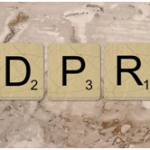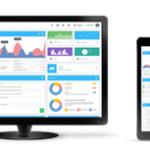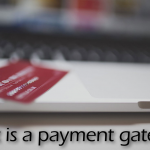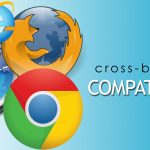 Thinking of building ecommerce capability on your website? Already have an ecommerce website that doesn’t seem to be working well enough? Do you have too many customers abandoning the shopping cart? Perhaps you haven’t thought of shopping cart usability yet.
Thinking of building ecommerce capability on your website? Already have an ecommerce website that doesn’t seem to be working well enough? Do you have too many customers abandoning the shopping cart? Perhaps you haven’t thought of shopping cart usability yet.
Just having an ecommerce website does not guarantee that customers would automatically start flowing in. It doesn’t guarantee that customers will even like your website’s ecommerce functionality. The key to ensuring that your ecommerce website works as you expect it to lies in the usability of your shopping cart. If your shopping cart is user friendly, more customers will like the experience of transacting with your website. If the shopping cart is not designed keeping the shopping cart usability best practices in mind, there’s a good chance that customers will not have the best experience during a transaction. This can result in shopping cart abandonment, dissatisfied customers, and an adverse impact on the reputation and image of your business as a whole.
Importance of shopping cart usability
It may seem obvious that a shopping cart needs to be usable. But there’s more to the importance of shopping cart usability than just facilitating transactions. Below are some of the reasons why shopping cart usability is important to businesses:
- Simplify the shopping experience: Between two similar websites, customers will invariably prefer to transact with a website with the simpler buying experience.
- Minimize abandoned shopping carts: If shoppers have to struggle to buy, either because of the speed or usability of the buying experience, they can abandon at any stage. Just because they added a product to the cart, they do not necessarily have to complete the transaction. Each abandoned cart is a lost business opportunity.
- Greater engagement: When customers have a good experience, they are more likely to share the experience with others. This can mean more social shares, more incoming links, more word of mouth referrals, better reviews and better overall engagement with the target audience.
- Better search engine performance: Dissatisfied customers can give bad reviews and have a higher bounce rate that can hurt your rankings in organic search. Happy customers mean better reviews and ratings. If you implement rich snippets, it means high star ratings for your listings in search results. This in turn can mean better click through rates and that in turn will mean higher rankings and even more traffic.
Shopping cart usability best practices
Below are some of the shopping cart usability best practices you need to ensure while building an ecommerce website.
- Site Search: Good usability starts even before customers enter the shopping cart. Good site search that helps customers find what they need quickly is more likely to make them add the product to the shopping cart.
- Filtering options: The easier you make it for the customer to purchase, the more likely the customer is likely to go through with the purchase. Search is good, but not enough. Think of how meaningfully you can allow the customer to filter results — by category, budget range, etc.,
- Establish credibility: Would you like to do business with someone you don’t trust? Your customers are no different. Make sure your place security and trust logos where they are most likely to help build trust and encourage the customer to go through with a transaction.
- Address concerns: Think of questions or concerns that customers may have and include copy that addresses these concerns and questions.
- Encouraging “add to cart”: How well your products are described, how enticing the product images are, how easy to find the “add to cart” button is, etc., can determine how many site visitors add products to the cart.
- More than a sale: “Adding to cart” should not be the only option. Products can be out of stock and customers may be researching when they land on your site. Options like “request this product”, “notify me when available”, “add to wish list”, “save for the future”, “gifting”, etc., can go a long way in bringing a customer back in the future.
- Don’t force an account creation: If your website uses the customer’s email as the user name, it is more likely to be remembered than if you force the customer to create a user name. Similarly, if you allow Facebook or G+ login, it will save the customer the process of creating an account. No one likes filling out forms necessary to create accounts on websites.
- Formatting and navigational best practices: Make sure you implement unique page Titles, effective heading tags, breadcrumb navigation and other forms of site navigation.
- Contact info: Many customers make sure they have some place to go to if they have problems. These customers are likely to check your contact info. Make sure you have as much information here as possible with customer support details, phone numbers, physical address, etc.
- Encourage further purchases: Related products, what others bought, you might also be interested in, etc., are modules that encourage a customer to purchase more. This can maximize the revenue potential from your shopping cart.
- Intuitive calls to action: This is important not just on the product listings but right through the shopping cart experience. At every stage through the buying process, it is important that you guide the customer through the various options available to the customer with intuitive and well places calls to action.
- Stages of purchase: On the one hand, it is a good practice to break up the purchase process so there isn’t too much on one page. It will speed up each page and not discourage customers with a long form to fill. On the other hand, more stages mean more chances of abandonment of the cart. Striking the balance between breaking the process up and not making it too many stages is the key to shopping cart usability.
- Don’t be shy of copy: Use copy creatively through the shopping cart process — to establish credibility, conversing with the customer, guiding the customer along. Done right, the copy can help you build rapport and connect with the customer.
- Inform the customer: Be it the visibility of the shopping cart contents, what stage the customer is in the purchase process or any other aspect of the purchase experience, it is important that you constantly inform the customer. It establishes transparency.
- Be transparent about money: Show every fee and tax clearly and separately in the shopping cart.
- Payment and Shipping Options: Be clear about the shipping and payment options you offer and make it easily visible to the customer.
- Allow a review: Having a review page before an order is placed is precious. It’s not the last chance to back out. On the contrary, it will make sure fewer mistakes by the customers. That means fewer declined transactions and fewer refund requests. This can only help your business.
Professional Ecommerce Design
Building ecommerce websites is easy. Building ecommerce websites that result in transactions and business is not so easy. If you need an ecommerce website that works more instead of a cheap ecommerce website, you need to talk to us about our ecommerce web design options. Let us help you make customers use your ecommerce website !
CEO, Flying Cow Design
Attended University of Auckland
Lives in San Francisco Bay Area










